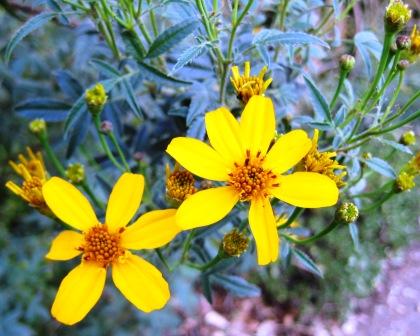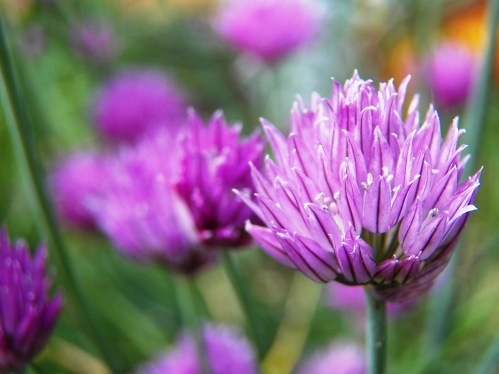As fine dining techniques begin to disperse into more mainstream restaurants, and even more so into home cooking, things like edible flowers are helping chefs and home cooks elevate their garnish game. Not only can they offer a splash of color, but most bring an immense amount a flavor in one little bite! Here is a list of some of the more common edible flowers that are fairly accessible, and in some cases, are growing wild in your own backyard:
Nasturtium:
This beauty is found in cultivated gardens, as well as can be foraged in the wild. Both the greens and the blossom are edible. The lily pad shaped leaves are pretty spicy and peppery, and can be a bit of an acquired taste. The blossoms are much more mild in flavor and spice. In fact, they bring a touch of sweetness to help round out the flavor profile of the plant. The blossoms make a great addition to a salad and should be served raw.
Marigold:
The varietal of marigold shown here is Mexican Marigold, but there are many different types of marigolds, with many different looking blossoms. The greens are edible as well are the blossoms, but be sure to find the young, tender greens which will be easier on the palate. The flavor is reminiscent to a sweet anise. I would even described it as a tangerine-bubble gum flavor. Marigolds are also a great addition to a garden, as they will fend off certain unwanted insects. Some of my favorite types of marigold are:
Mustard:
If you time it right, mustard blossoms can be foraged in the wild. Southern California hillsides are blanketed with them from spring to early summer. If you don’t have access to them in the wild, or they are out of season, these can be cultivated in the garden by letting mustard greens bolt (go to flower). Mustard blossom flavors can range from a mild tingle to a serious bite on the palate. One of the chefs that I work with was making his own mustard purely out of the blossoms…brilliant!
Radish:
These little beauties have to be one of my favorites! So delicate, and so delicious! Radish blossoms are another edible flower tadalafil that can be found either in the wild, or in the garden. I’ve seen radish blossoms in an array of colors; white, pink, yellow, purple and there is no mistaking what kind of plant this blossom is coming from, so much radish flavor and spice packed into a beautiful little blossom.
Chive:
Once you’ve tried a chive blossom, you realize what an impact an edible flower can have on a dish. The first time I had one, they were sprinkled on top of a raw oyster…WOW! It was a revelation and made me prednisone understand that a plant can have many usable parts, not just the traditional ones we know them for. Boasting a bit of spice, a chive blossom is a great substitute or addition to any recipe requiring that distinct allium flavor.
Borage:
Think cucumber! Thats right, borage blossoms taste exactly like cucumbers. These hearty plants are very easy to grow, and are a favorite to bees. The blossoms are prolific on the
plants, and will bloom from early spring to late fall. However, use caution when harvesting as the plant has some prickly leaves!
**It is important to note that whenever foraging in the wild, one should obtain permission to enter on to private property. It is also imperative to identify the plants you are harvesting from as safe for consumption.**







Reblogged this on Steel Toes & Florals.